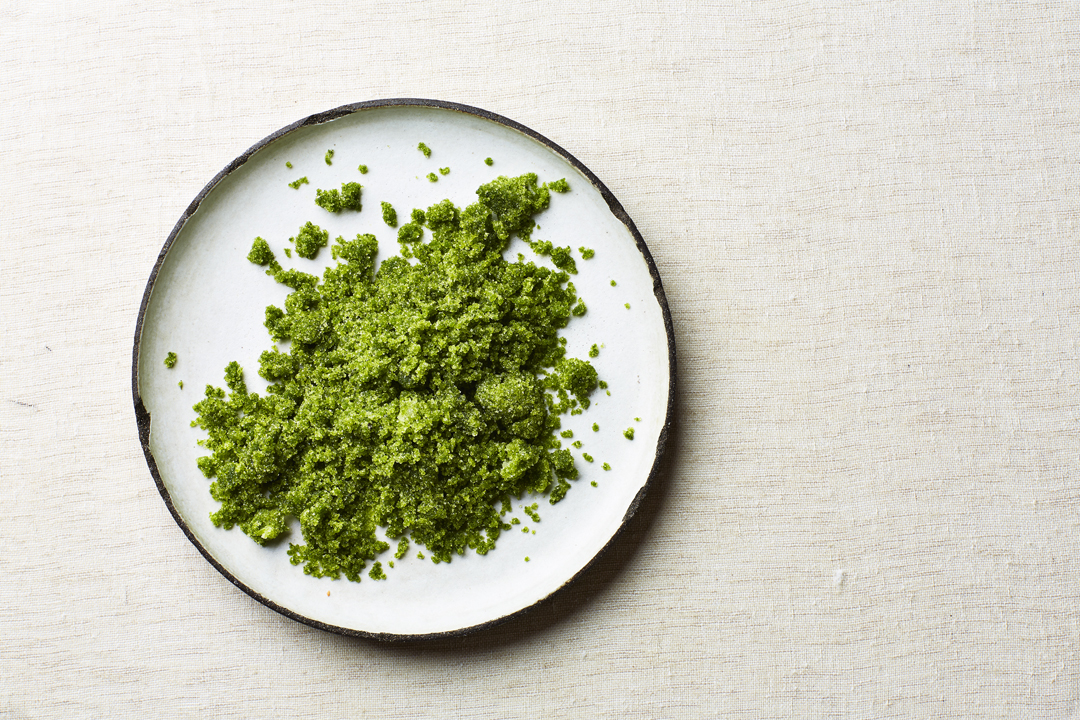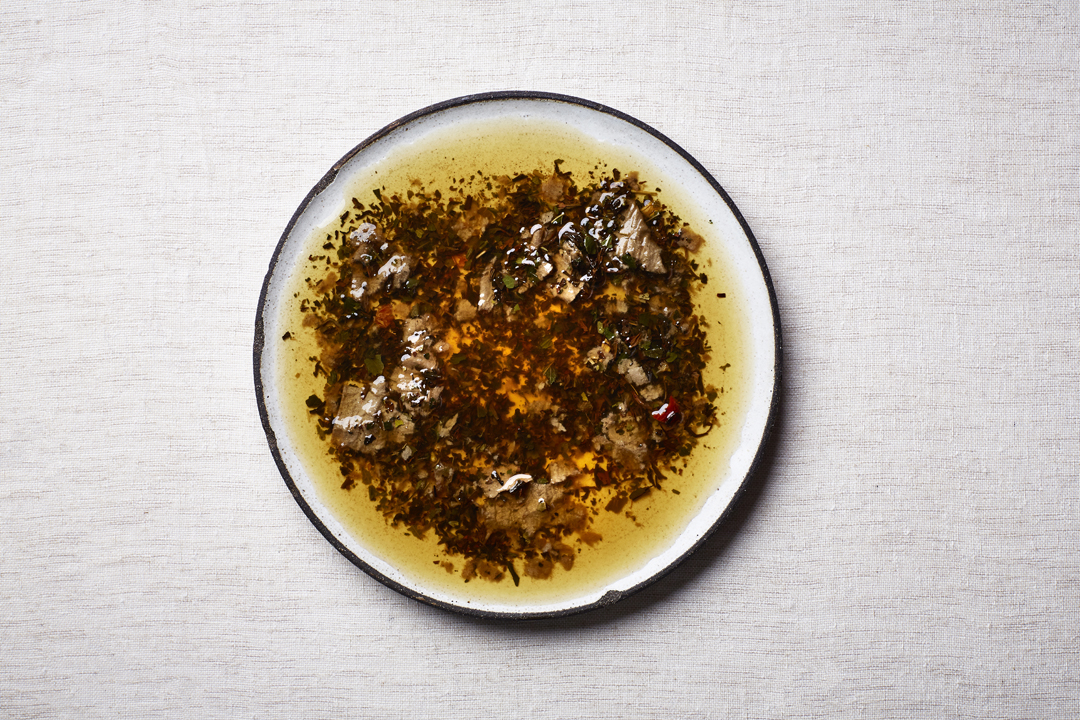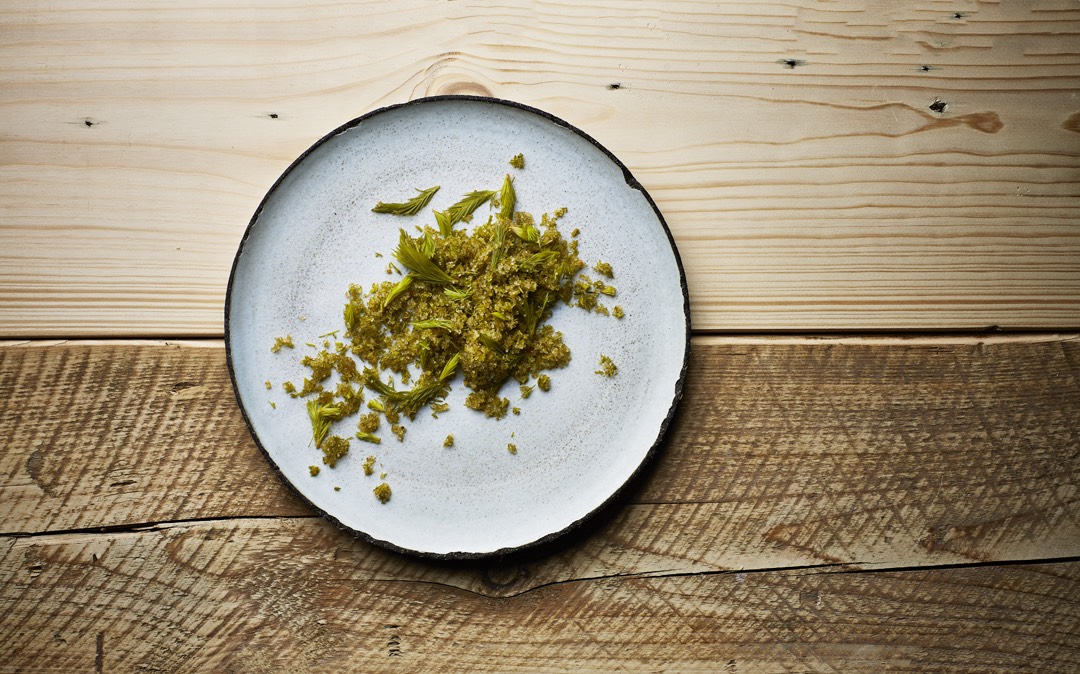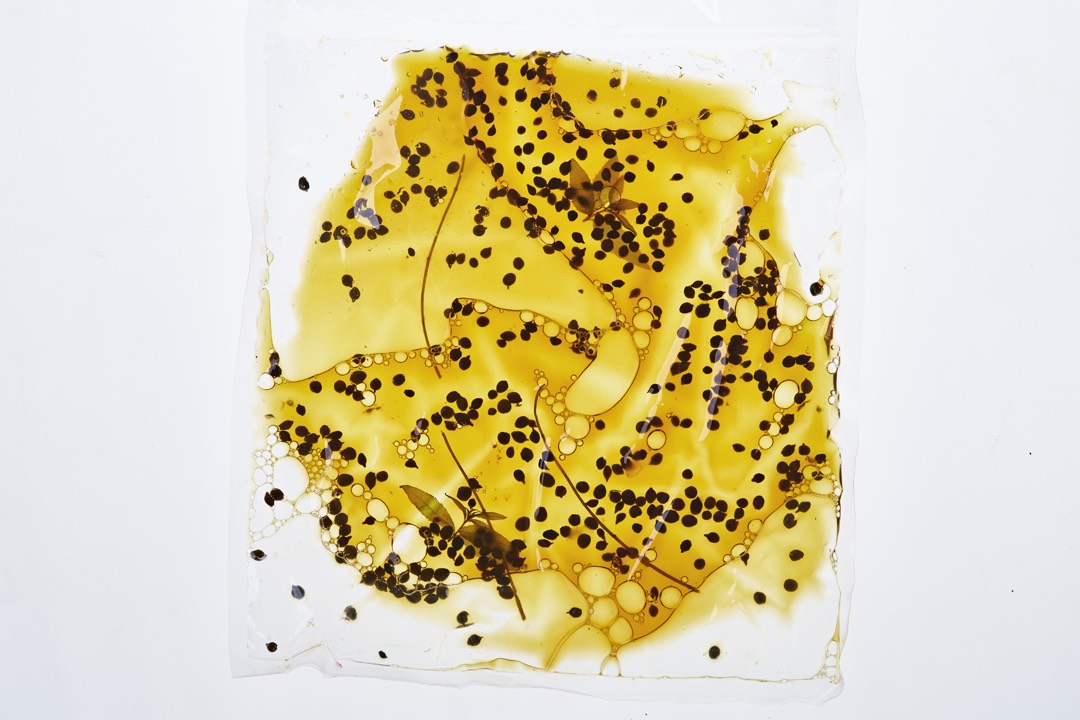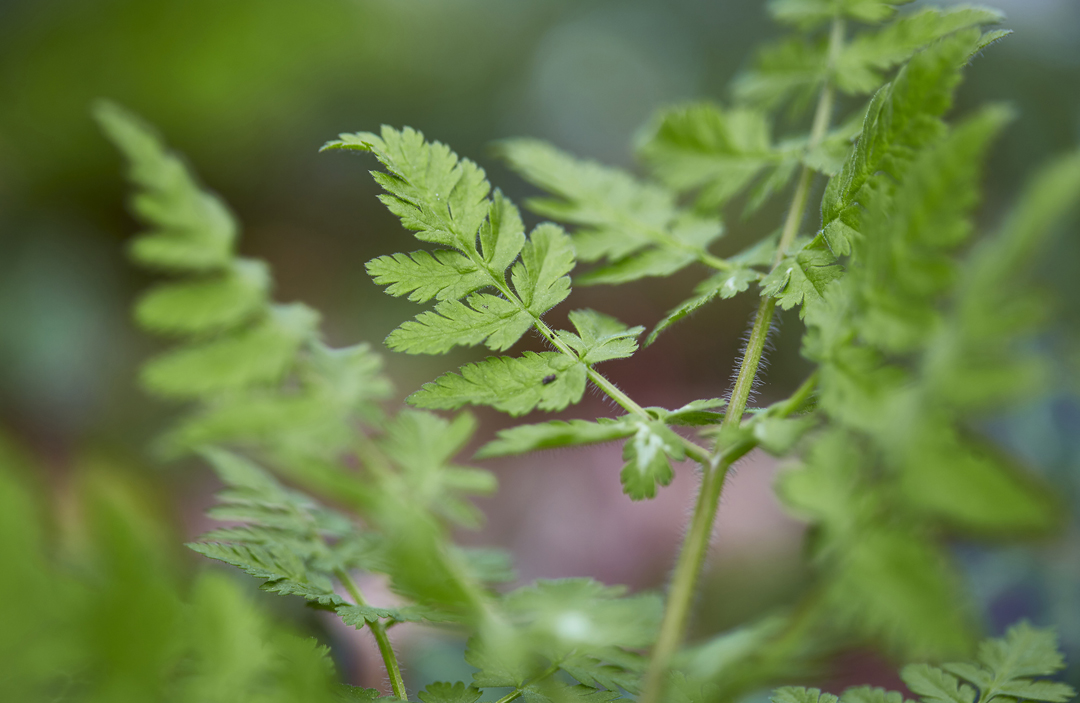
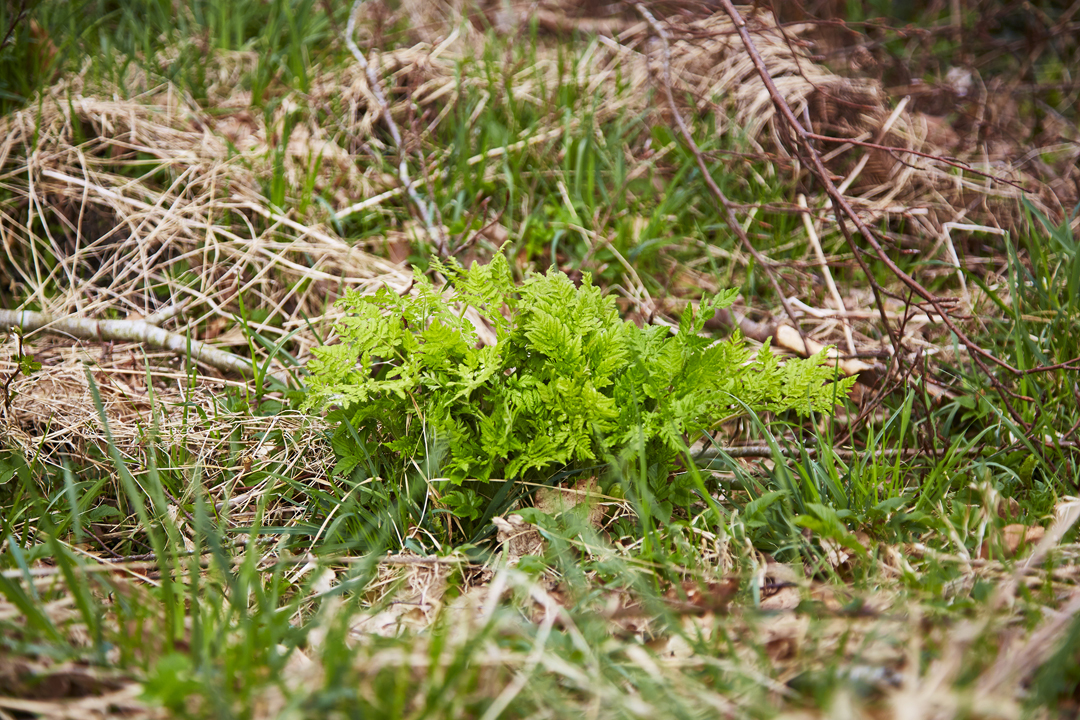
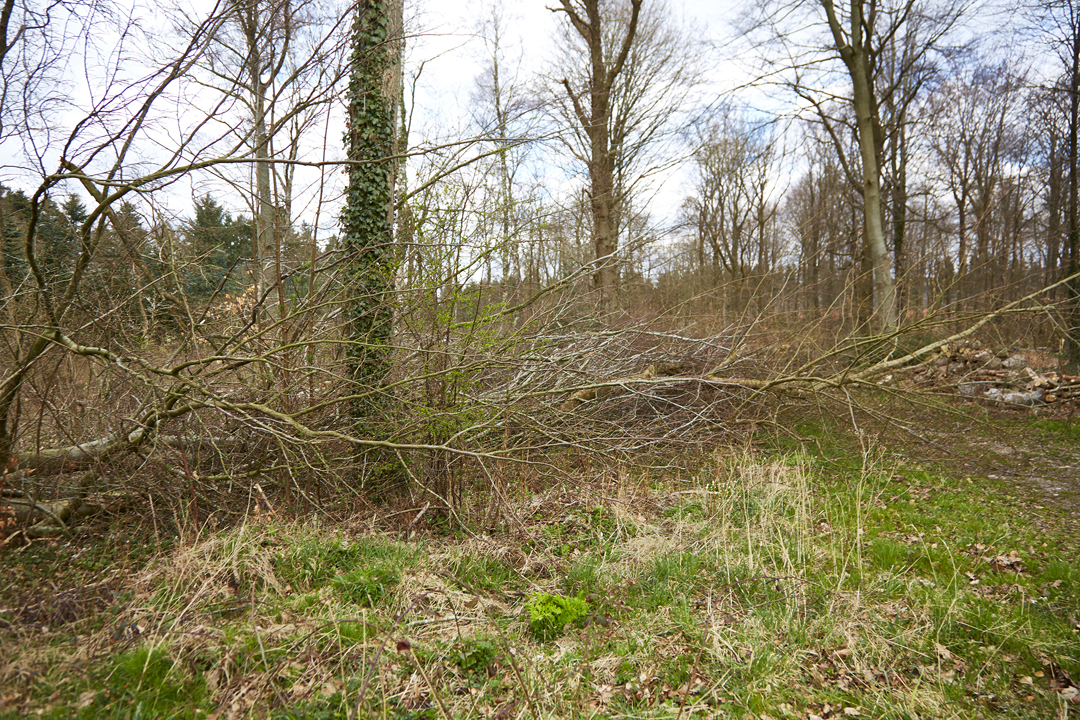
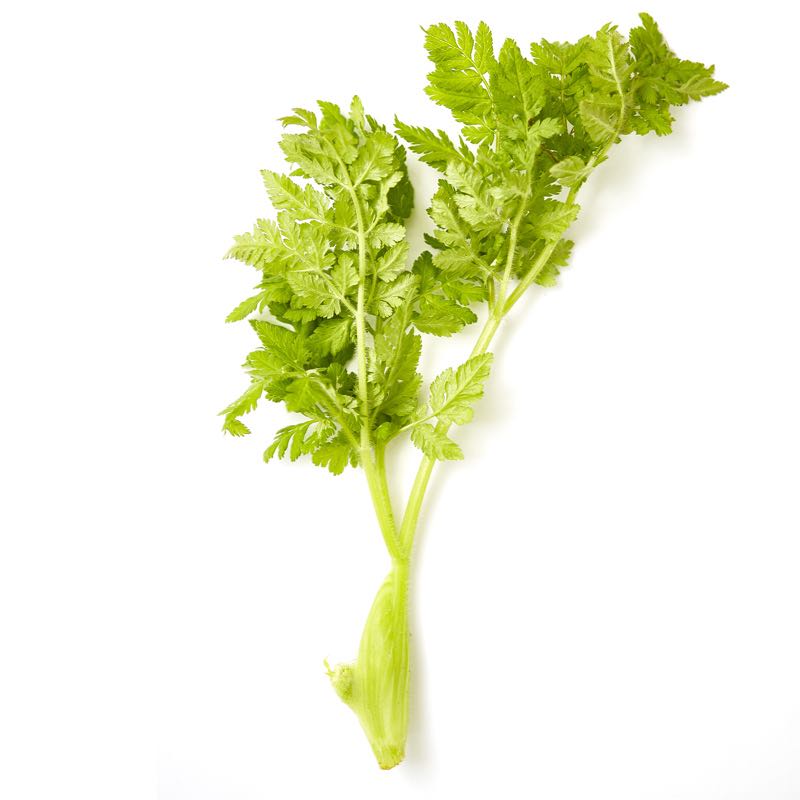
Sweet cicely
Sweet cicely, or Spanish chervil, tastes like anise and fennel. Its sweetness makes it perfect for desserts, but it also has a place in savory dishes, especially those with fish.
-
Where to Find It
You'll find sweet cicely all across Denmark, albeit less often in western and northern Jutland. It thrives in moist soil, full sun, or in the shade at the edge of woods, deciduous forests, or roadsides.
Deciduous forests, towns, hedges, roadsides, grasslands.
-
When to Find It
You can pick the leaves and stem of sweet cicely from March until November, and the flowers from May until June. The seeds are available in the middle of the summer.
Leaves and stem: March, April, May, June, July, August, September, October, November. -
How to Spot It
Sweet cicely can grow to be over a meter tall and has a hollow, round stem with grooves. The leaves resemble fern fronds—they're triangular and feathery as they branch out, with a soft, hairy texture almost like velvet. The small white flowers grow in umbrella-shaped clusters and the seeds, which grow upright in small clusters, look like tiny green, pointy bananas.
-
How to Pick It
You can use the stem, leaves, flowers, and seeds of sweet cicely. It's best to pick leaves that are bright green, and never those that grow right up against the stem. Instead, take the outer tips from several plants.
Flowers: May, June.
Seeds: June, July.
Risk of misidentifying the plant
Sweet cicely can be mistaken for other umbellifers, one of which you should be particularly careful about: poison hemlock. The stem on the hemlock is smooth, it has a bluish tinge, and is spotted with red on the bottom. Among umbellifers, only sweet cicely has the scent and taste of licorice, so if in doubt, break and leaf smell it first.


